(Q.) Which CRITTER has four legs and flies?
(A.) The classic answer is "a horse, of course!" (And we don't mean the mythical Pegasus)
If you answered that it was this male Julia heliconian butterfly as it prepares for a landing on a Lantana flower, you would have been wrong. Its proboscis is already extending in anticipation of the sweet taste of nectar, and its landing gear are down.
Count those legs-- four! But why is this the wrong answer? Stay tuned to find out.

Another answer might be pairs of two-legged creatures with wings. Maybe this is cheating because the riddle implies that it seeks the identity of a single creature. Anyway, here are a few couples who, arguably, meet the description. Can you distinguish the males from females?
Mottled Duck males tend to be bigger and have yellowish mostly clear bills:

Pileated Woodpecker males have a red forehead and mustache streak, but both are gray or black in females:


The red on the nape and head of male Red-bellied Woodpeckers extends all the way to the forehead, but the female's forecrown is light gray:
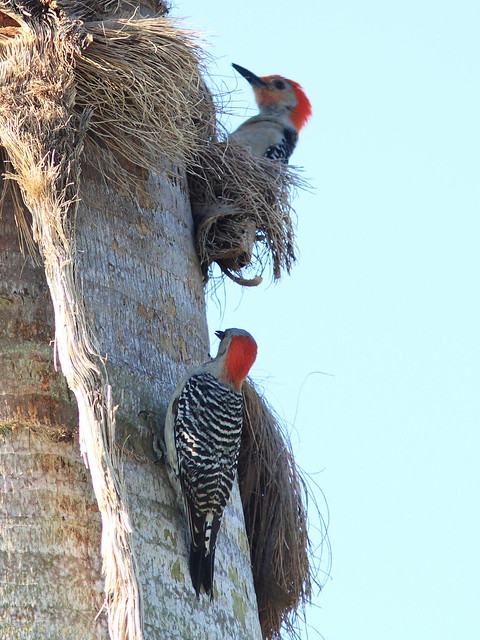
Least Tern sexes are similar and best determined by behavior. Males (in the foreground) usually seem to have a brighter yellow bill:

Bald Eagle males are noticeably smaller than females and their gape usually extends no more than halfway under the eye, while that of the female (in foreground) may reach past the center of the eye:

We happen to know that the male in this pair of Burrowing Owls looks as if he has a beard. He also seems to have a deeper "frown," but these are individual characteristics. Normally the female is darker during breeding season because the slightly larger male stands guard outside the burrow and his feathers are more exposed to the bleaching effect of sunlight:

In these Mew Gulls it is anybody's guess as to which is the male. Both have brightest yellow bills during breeding season. This photo was taken in June, 2011 in Denali National Park, Alaska:

From their behavior, we know that the Killdeer on the left is the male. He repeatedly expanded the upper ring on his neck as a courtship gesture:
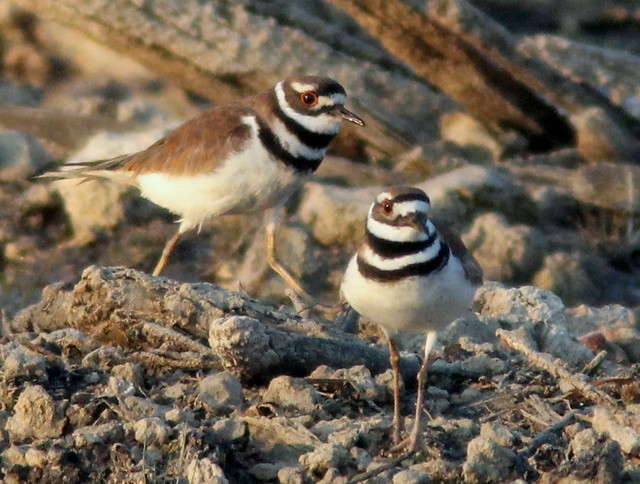
Mallards-- no problem finding the colorful drake here!:

House Finches-- who wears the brightest coat?:

The sexes of Green Herons are very similar, but we think the one presently incubating the eggs is the male because its legs were bright red, not described as a reliable indicator. This pair is exchanging incubation duties:
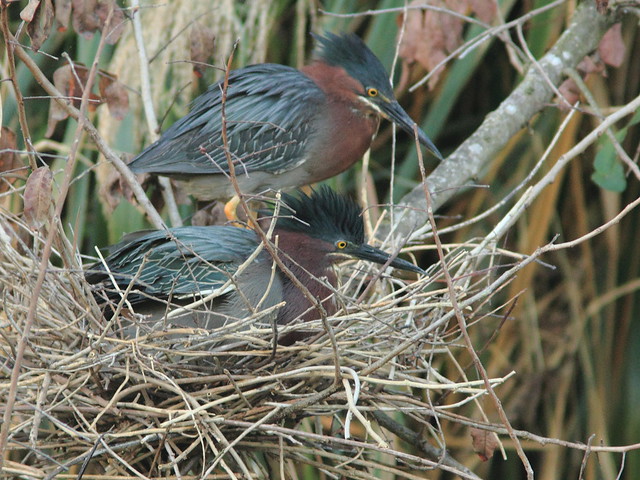
Male Yellow-crowned Night-Herons are said to be slightly larger than females, but this is a toss-up:
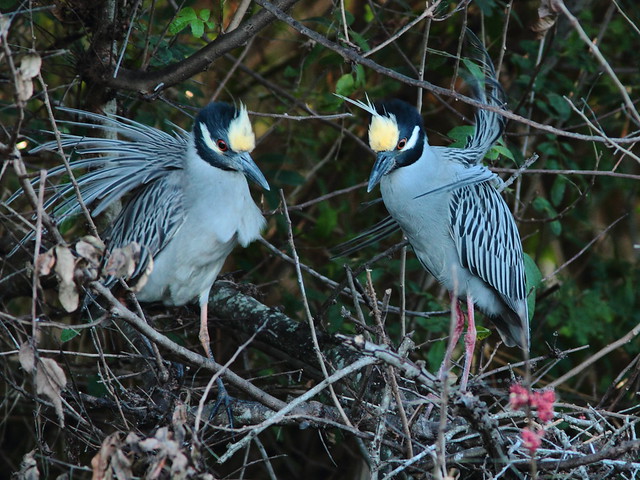
The male Mourning Dove on a FENCE is all puffed up:

These Purple Swamphens share four legs (not counting those in the REFLECTION) but sexes are similar:
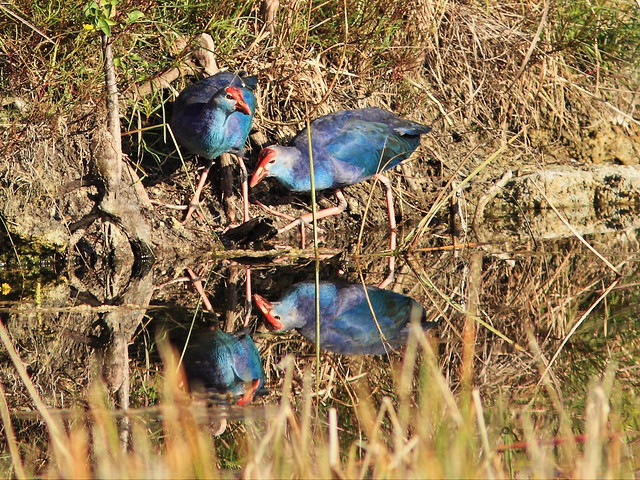
To be concise, the riddle should have asked: "What has six legs, two wings but only four feet?" That might have been a real puzzler, keeping you on the edge of your seat to hear the answer. The Julia heloconian indeed fits this description.
Top MACRO view, male Julia:

Top view, female Julia:
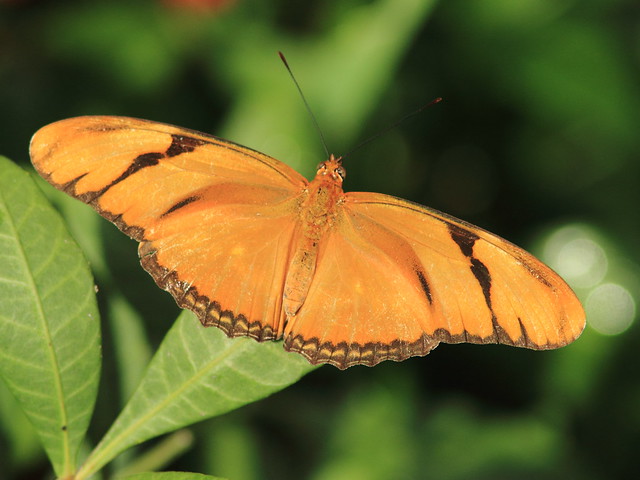
Side view, male also shows four legs...
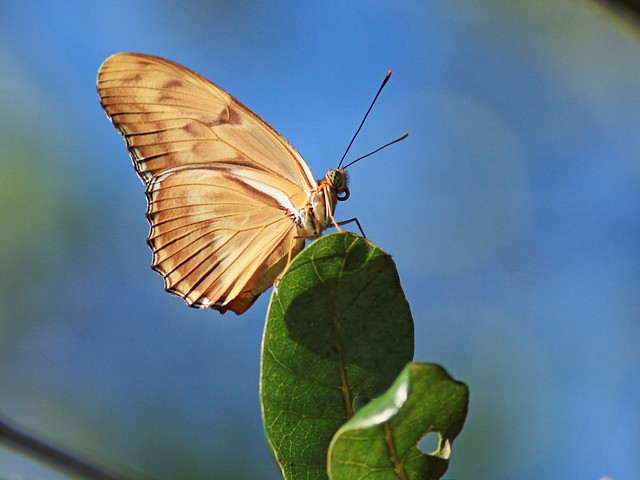
As does this side view of a female:

The Julia belongs to the group of brush-footed butterflies or four-legged butterflies. Many species are brightly colored but their under-wings are often dull and may look like dead leaves, as in the case of this species.
In adults, the first pair of legs are much shorter than the other four legs, and are not used for walking. The front legs do not have feet, just little brushes of hairs that are used for smelling and tasting. Like parts of their mouth,they can be so small as to be practically invisible.
Rain Clouds moved into the SKY over the lake a little after sunrise:
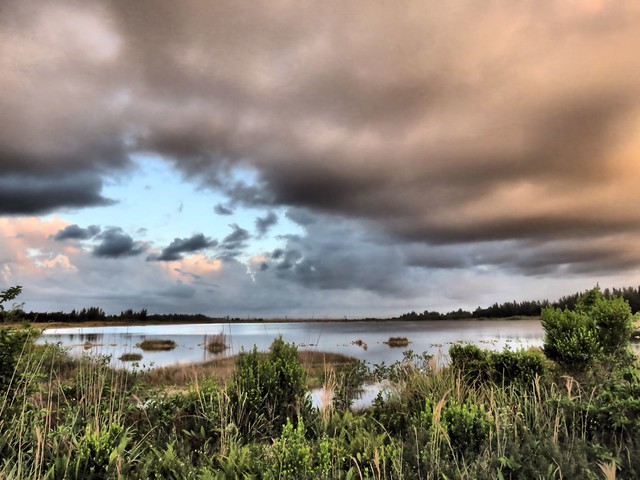
A bonus photo-- we have just returned from a rail trip in Canada. This is the view of Lake Louise in Banff National Park, Alberta. It is taken from the window of our room in the Fairmont Chalet. The sun is breaking through the clouds. The Upper Victoria Glacier is visible in the background. The Lower glacier extended well into the lake in the early part of the 20th Century, but now has retreated up and to the right of the mountain.
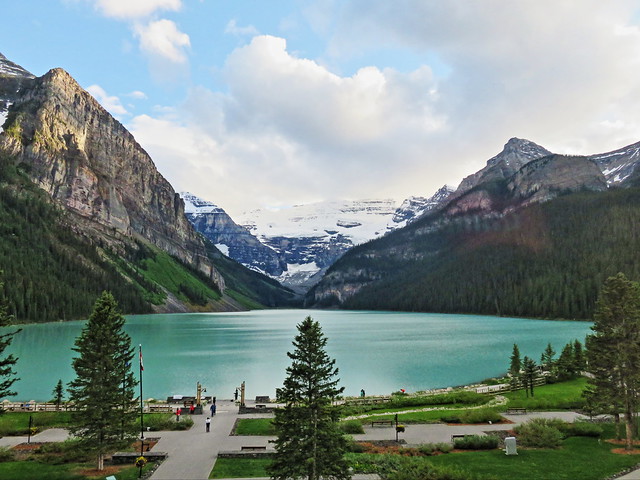
As the lake is fed by outflow of the glaciers, it takes on an emerald color, due to the suspended "glacier dust" or "rock flour" which is scoured from the limestone as the ice moves down. Depending upon sky conditions, the water may appear any color from gray to deep blue or green.
= = = = = = = = = = = = = = =
Linking to Misty's CAMERA CRITTERS,
Linking to Eileen's SATURDAY'S CRITTERS,
Linking to GOOD FENCES by Tex (Theresa).
Linking to SKYWATCH FRIDAY by Yogi, Sylvia and Sandy
Linking to WEEKEND REFLECTIONS by James
Linking to BirdD'Pot by Anni
Linking to Wild Bird Wednesday by Stewart
Linking to I Heart Macro by Laura
________________________________________________
Please visit the links to all these memes to see some excellent photos on display
________________________________________________
Linking to Misty's CAMERA CRITTERS,
Linking to Eileen's SATURDAY'S CRITTERS,
Linking to GOOD FENCES by Tex (Theresa).
Linking to WEEKEND REFLECTIONS by James
Linking to BirdD'Pot by Anni
Linking to Wild Bird Wednesday by Stewart
Linking to I Heart Macro by Laura
________________________________________________
Please visit the links to all these memes to see some excellent photos on display
________________________________________________